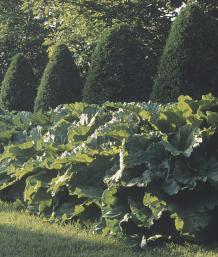
Photo/Illustration: Virginia R. Weiler, taken at Les Quatre Vents, La Malbaie, Quebec
Music is not just about the playing or singing of musical notes; it’s also about the spaces and dynamic tension— or rhythm—created between those notes. Rhythm in music takes the form of patterns of recurring beats—the underlying structure beneath a melody. Rhythm in a landscape is about repetition and the strategic placement of elements that contribute to a garden’s underlying structure.
I first became aware of the effective use of rhythm in landscapes when I went to Japan. Garden designers in Japan deftly use rhythm in understated but powerful ways. The most important lesson I learned was that good design is not so much about the objects in a landscape (including the plants), but rather about how those objects relate to one another and to the spaces they define. It’s these relationships that communicate rhythm. The visual ebb and flow created by these relationships can be compared to recurring beats and pauses in musical notation. A “well-orchestrated” garden design is akin to a well-written musical composition.
Rhythm can affect the pace at which a visitor moves through a garden, and even the mood that a space evokes. Just as musical rhythms can be even or syncopated, strong or subtle, so can the rhythms of a garden.
Spatial rhythm can be experienced from a static perspective, as well as by physically moving through a space.
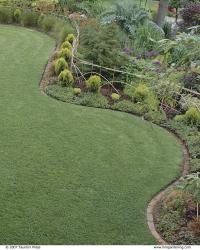
Photo/Illustration: Virginia Small, taken at the garden of Nani Waddoups and Ron Wagner
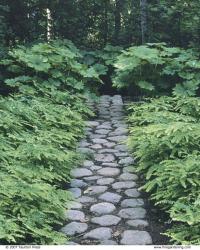
Photo/Illustration: Virginia R. Weiler, taken at Les Quatre Vents, La Malbaie, Quebec
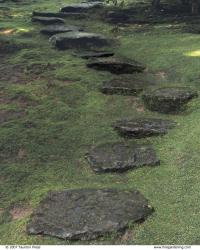
Photo/Illustration: Allan Mandell
Rhythmic repetition establishes visual and physical pacing
Repetition is one of the most useful tools for introducing rhythm into a garden. Repeating a form, color, or texture helps to establish the visual pacing that leads the eye through a garden. The intervals at which an element is repeated will distinguish one rhythmic motif from another. The stalwart vertical columns of trees are the kings and queens of rhythm in the garden. The relative spacing of trees, and thus the visual pacing, can set the tone for the rest of the plantings. A formally balanced and linear planting of trees makes a good backdrop for an understory of evenly spaced shrubs. An informally balanced and nonlinear planting of trees can reinforce an undulating mass of understory shrubs. Hardscaping with such repeating elements as fences, steps, and walls can play an important role in establishing a garden’s rhythm. The spacing of the repeating elements can convey a specific rhythm. For example, a line of straight, evenly spaced steps tends to be like a monotonous, repeating beat. In contrast, the staggered spacing of a series of clustered steps offers a more complex and engaging rhythm.
One simple way to introduce a rhythm is to repeat an architectural form like a column or a pole. By repeating and occasionally clustering a form in a garden, you can create an immediately recognizable rhythm. You might consider using several columns of varying heights.
Sculptural plants, such as columnar or conical evergreens, also serve well as anchoring rhythmic elements, providing a regular repeating baseline beat. Consciously varying the height and spacing of such dominating plant forms can give an underlying sense of order to a landscape. I’m especially fond of using stones as a repeating design element. A successful arrangement of stones relies on the rhythm associated with the spacing among individual stones as well as among their relative heights. Rhythm also helps to establish the pace of movement through a garden. Think of the journey along a pathway. A path that is open, broad, and straight will promote an entirely different pace and mood than does one that is narrow and meandering. For example, walking through an allée of evenly spaced trees promotes a formal, measured pace. In contrast, walking on stepping-stones requires looking down for careful foot placement, thus encouraging attention to details of the landscape. When there’s a bridge to cross or the texture of the path changes, pace and experience are also affected.
Translating musical terms into garden design
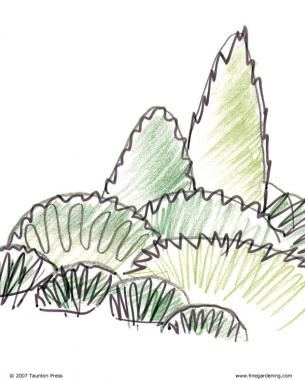
Any term relating to music can be used to express a similar concept visually. The art of it lies in the interpretation. The following are a just a few terms that relate to a musical composition’s rhythm or style, along with comments about their potential translation in garden design. A garden can embody one or several of these concepts.
4/4 time represents an even, regular beat signature of four beats to a measure (a unit of musical notes). In a very formal garden, this could be expressed as a background rhythm of trimmed hedge in a crenelated pattern. It could also represent portions of a visual composition consisting of physical objects that are symbols of the notes themselves. For example, large boulders could represent whole notes, with corresponding smaller plants representing half, quarter, or eighth notes. The ratios would apply to the height as well as the breadth of the objects.
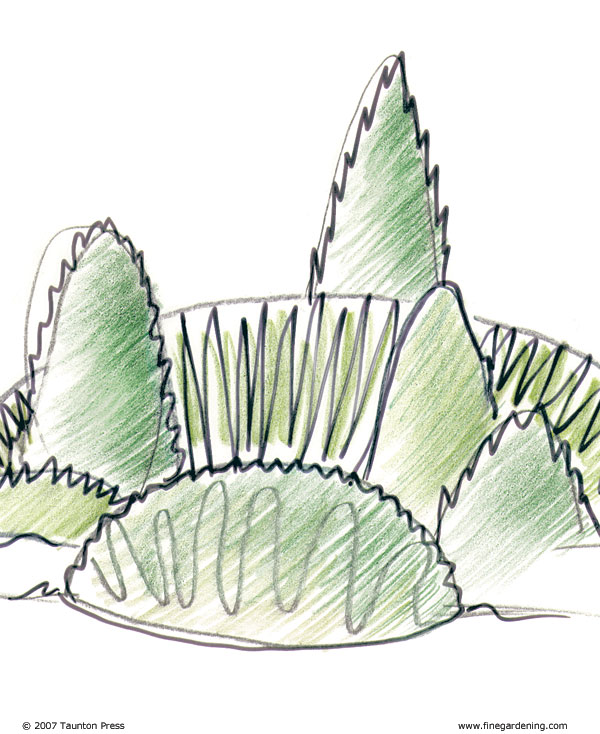
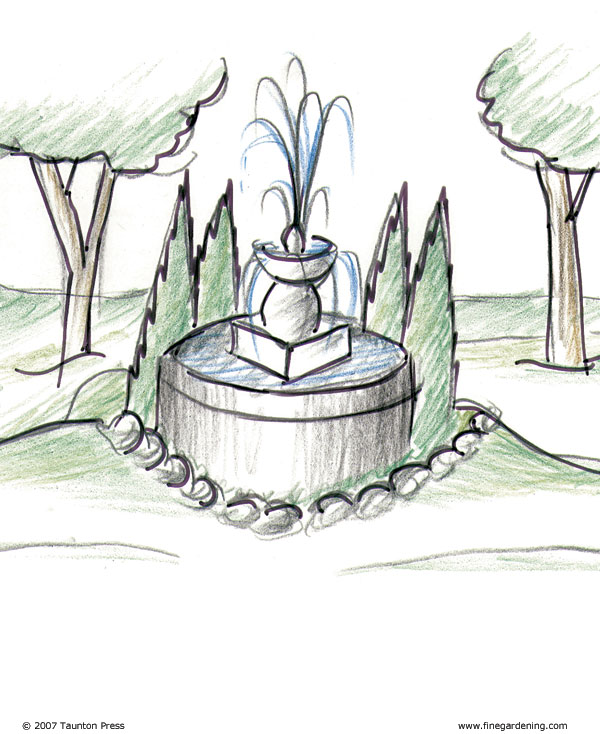
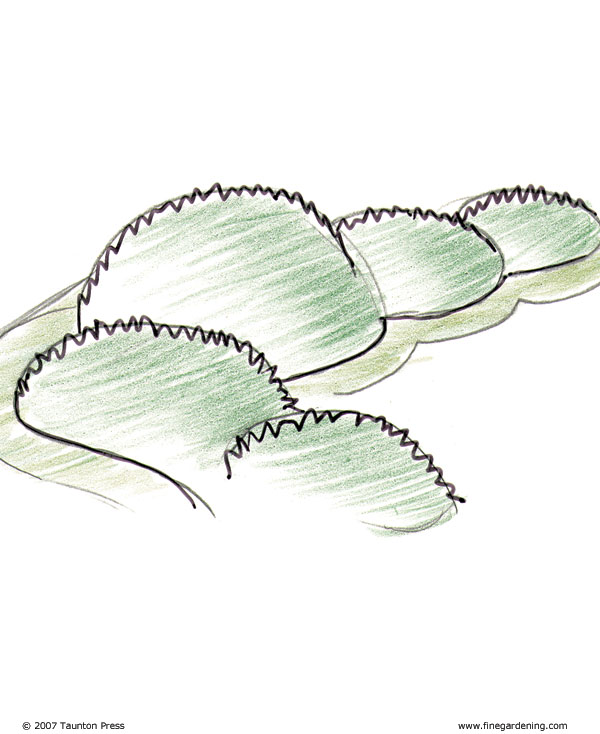
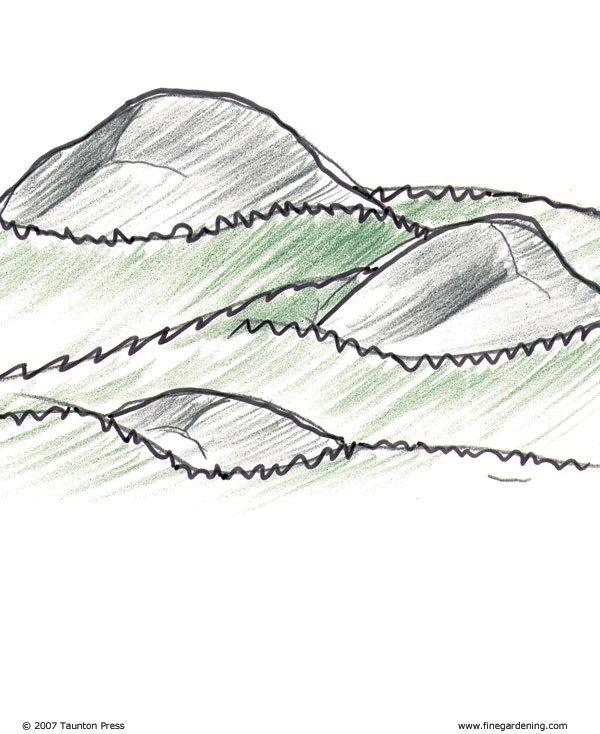
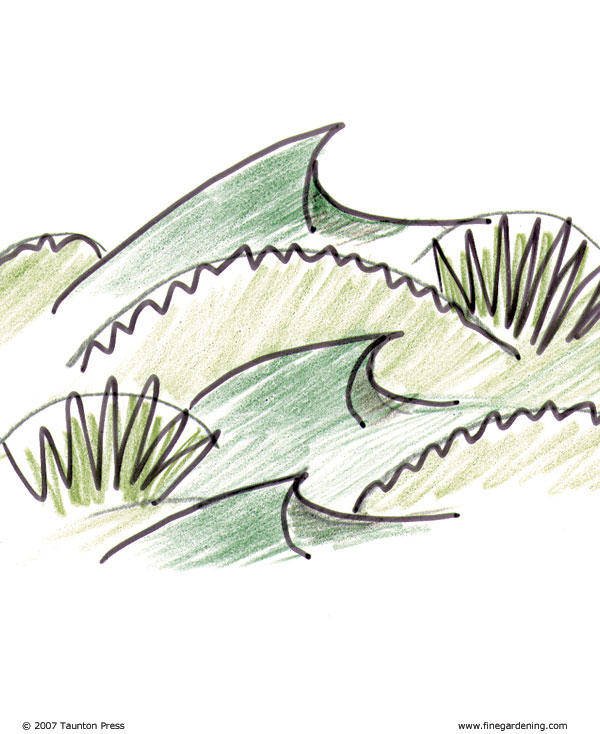
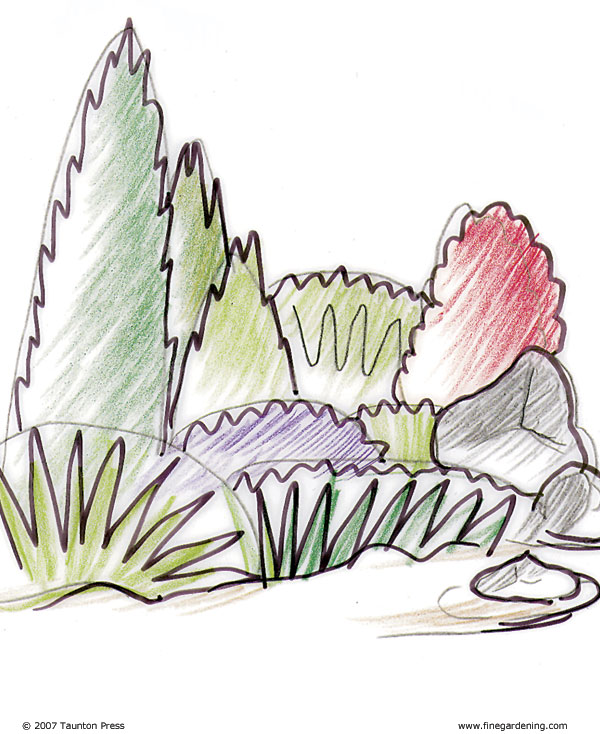
Consider positive and negative space when placing elements
Working with positive and negative space is another key to instilling a sense of rhythm. Positive space can be viewed as a solid object and negative space as the “empty” space that is defined by the solid objects. An example of using positive and negative space to create rhythm is the siting of masses of plantings next to the flat, single-textured plane of lawn areas. How and where you conceal and reveal that lawn (negative space) in relation to the plant masses (positive space) in large part determines the rhythm of that space.
Plants can also serve as fixed focal points—places within a garden where the eye can rest as it moves through the space. These focal points, similar to cadenzas in music, can be specimen plants or plants with a unique form or structure. An unfocused and unplanned rhythm can foster a jarring sense of a garden being incomplete somehow. In contrast, the effective use of rhythm brings a harmonious undercurrent to a garden. Understanding the nuances of rhythm can help you bring a song to your garden and to your heart.
Fine Gardening Recommended Products

A.M. Leonard Deluxe Soil Knife & Leather Sheath Combo
Fine Gardening receives a commission for items purchased through links on this site, including Amazon Associates and other affiliate advertising programs.

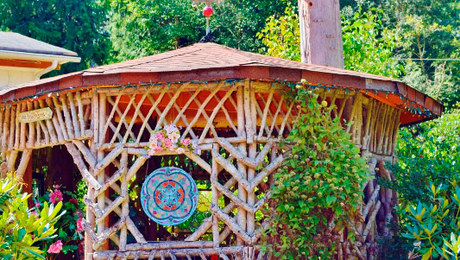
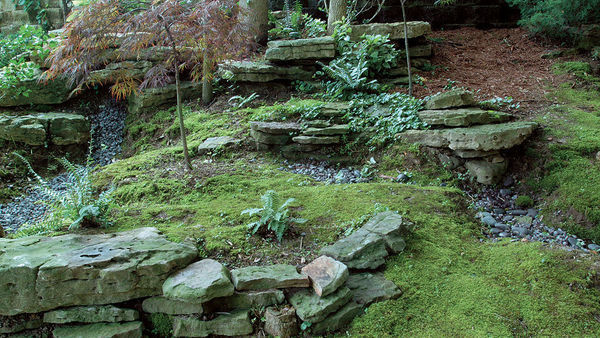
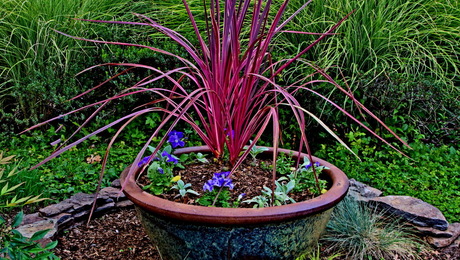
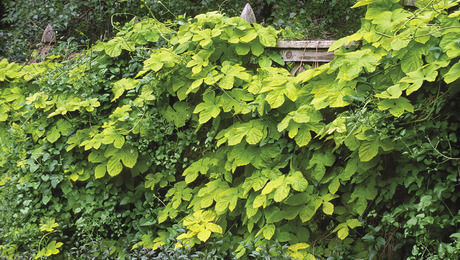













Comments
In my new garden design book, "Heaven is a Garden", I have chapter entitled 'Music for the Eye'...it is all about this. :-)
I basically make approximately 6,000-8,000 dollars monthly with an online job. If you are willing to work simple freelance work for 2-5 hours /day from your home and earn valuable profit for doing it... Then this opportunity is for you... http://ur1.ca/p7vwh
Log in or create an account to post a comment.
Sign up Log in